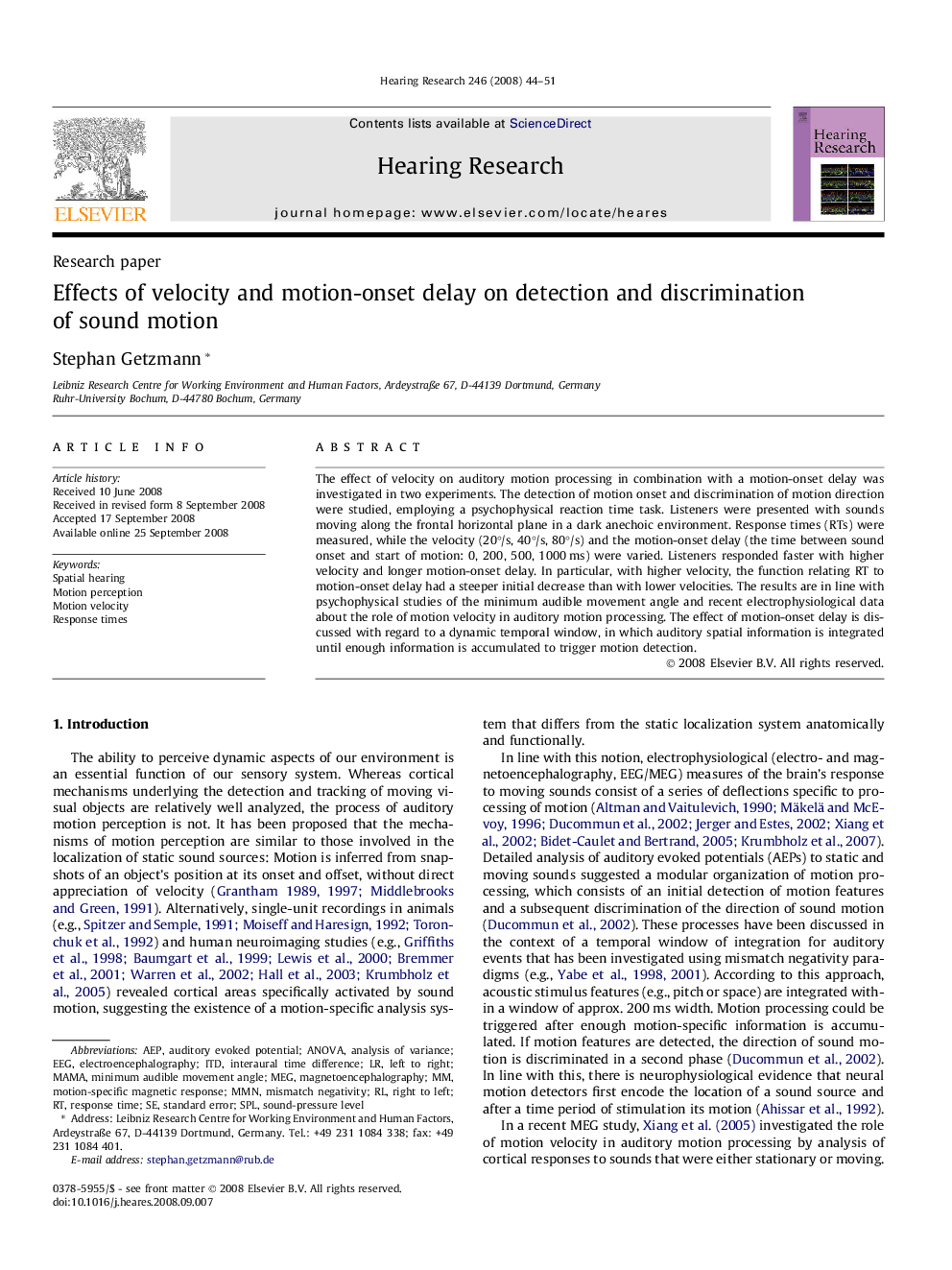| Article ID | Journal | Published Year | Pages | File Type |
|---|---|---|---|---|
| 4356028 | Hearing Research | 2008 | 8 Pages |
The effect of velocity on auditory motion processing in combination with a motion-onset delay was investigated in two experiments. The detection of motion onset and discrimination of motion direction were studied, employing a psychophysical reaction time task. Listeners were presented with sounds moving along the frontal horizontal plane in a dark anechoic environment. Response times (RTs) were measured, while the velocity (20°/s, 40°/s, 80°/s) and the motion-onset delay (the time between sound onset and start of motion: 0, 200, 500, 1000 ms) were varied. Listeners responded faster with higher velocity and longer motion-onset delay. In particular, with higher velocity, the function relating RT to motion-onset delay had a steeper initial decrease than with lower velocities. The results are in line with psychophysical studies of the minimum audible movement angle and recent electrophysiological data about the role of motion velocity in auditory motion processing. The effect of motion-onset delay is discussed with regard to a dynamic temporal window, in which auditory spatial information is integrated until enough information is accumulated to trigger motion detection.
